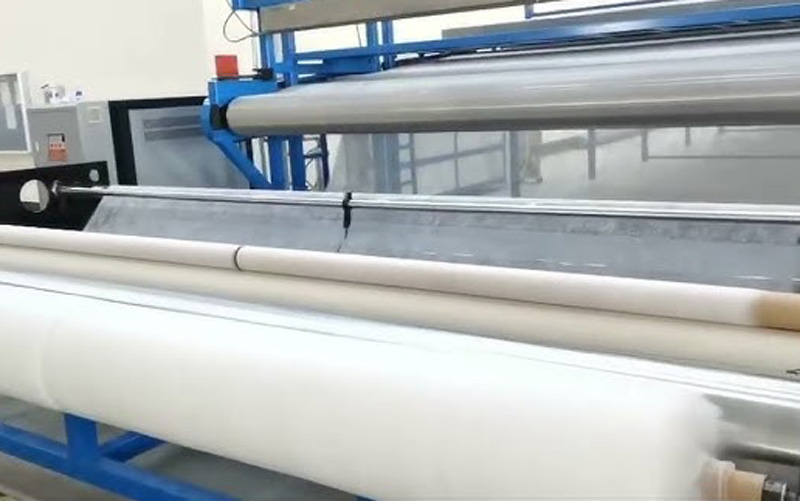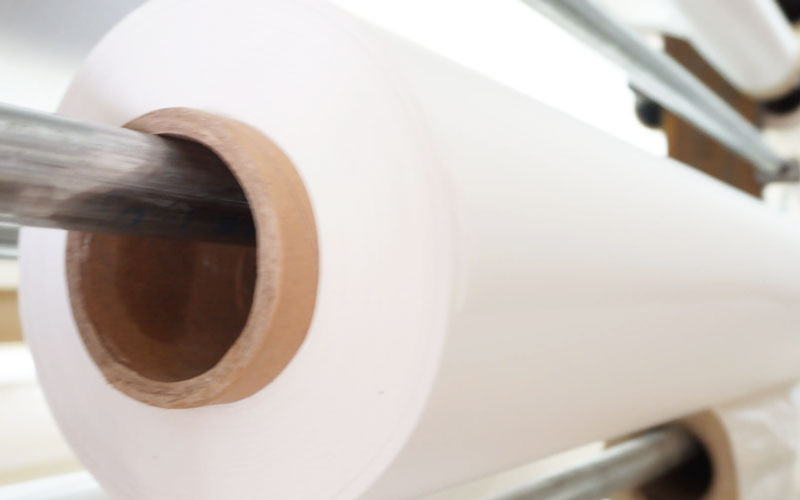In the modern packaging and printing industry, achieving high-quality, durable, and visually appealing products is essential. One technology that has revolutionized the industry is hot melt lamination film. Known for its efficiency, versatility, and strong bonding properties, hot melt lamination has become a preferred choice for businesses looking to enhance the functionality and aesthetics of printed materials. This article provides a comprehensive guide to hot melt lamination film, covering its types, advantages, applications, and frequently asked questions.

What is Hot Melt Lamination Film?
Hot melt lamination film is a type of adhesive-coated film that is applied to surfaces using heat and pressure. Unlike cold lamination methods, hot melt lamination uses thermoplastic adhesives that melt when heated and solidify upon cooling, creating a strong and durable bond between the film and the substrate. The technology is widely used in printing, packaging, and industrial applications to protect surfaces, improve appearance, and increase longevity.
A variation of this term, hotmelt lamination film, is commonly used in the industry, and both terms refer to the same technology. The film typically comes in rolls and can be applied to materials like paper, cardboard, plastics, and textiles.
Types of Hot Melt Lamination Film
Hot melt lamination films can be manufactured from different polymer materials, each offering distinct bonding properties, flexibility, and application suitability. The choice of film largely depends on the substrate material, processing temperature, required durability, and end-use environment. Below are the most common types of hot melt adhesive films used for lamination:
1. TPU Hot Melt Adhesive Film
TPU (Thermoplastic Polyurethane) hot melt adhesive film is known for its excellent elasticity, transparency, and strong bonding ability to textiles, leather, and plastics. It offers outstanding wear resistance, flexibility, and water resistance, making it widely used in the shoe industry, sportswear, and outdoor gear. TPU hot melt lamination film is also eco-friendly and free of harmful solvents, making it suitable for applications requiring safety and environmental compliance.
2. TPE Hot Melt Adhesive Film
TPE (Thermoplastic Elastomer) hot melt adhesive film combines the elasticity of rubber with the processing advantages of thermoplastics. It features good softness, strong adhesion to flexible substrates, and resistance to bending fatigue. TPE hot melt lamination film is commonly used for medical supplies, automotive interiors, and flexible packaging where comfort and elasticity are key.
3. EVA Hot Melt Adhesive Film
EVA (Ethylene-Vinyl Acetate) hot melt adhesive film is valued for its low melting point, excellent flexibility, and cost-effectiveness. It bonds well with porous materials like paper, fabrics, and foam, making it a popular choice in packaging, bookbinding, and household products. EVA hot melt lamination film is widely applied in industries where affordability and general-purpose bonding are required.
4. PES Hot Melt Adhesive Film
PES (Polyester) hot melt adhesive film provides high bonding strength, chemical resistance, and durability under elevated temperatures. It is particularly suitable for laminating metals, glass fibers, and technical fabrics. PES hot melt lamination film is often used in automotive, electronics, and industrial filter materials, where long-term stability and heat resistance are essential.
5. PO Hot Melt Adhesive Film
PO (Polyolefin) hot melt adhesive film is lightweight, cost-effective, and provides excellent resistance to moisture and chemicals. It has good adhesion to non-polar materials such as polyethylene and polypropylene. PO hot melt lamination film is widely used in the packaging industry, building insulation materials, and waterproof membranes due to its strong sealing and environmental protection features.
6. PA Hot Melt Adhesive Film
PA (Polyamide) hot melt adhesive film is known for its excellent heat resistance, strong adhesion, and durability. It bonds well to textiles, leather, and engineering plastics. PA hot melt lamination film is frequently used in high-performance applications such as automotive components, footwear manufacturing, and military gear where mechanical strength and long-lasting adhesion are required.

Common Applications of Hot Melt Lamination Film
The versatility of hot melt lamination film makes it suitable for a wide range of applications across different industries:
1. Packaging Industry
Lamination is extensively used in packaging to enhance durability and visual appeal. Hot melt lamination films protect boxes, cartons, and flexible packaging materials from moisture, grease, and wear. Gloss and matte finishes are popular for luxury packaging, while textured and soft-touch films add a premium feel.
2. Printing Industry
Printed materials such as brochures, book covers, business cards, magazines, and calendars benefit from lamination. The lamination process enhances color vibrancy, prevents ink smudging, and extends the lifespan of printed materials.
3. Labels and Stickers
Hot melt lamination film is used to laminate labels and stickers for products, ensuring they remain intact under harsh conditions. UV-resistant films are particularly valuable for outdoor labels and shipping labels that are exposed to sunlight.
4. Industrial Applications
Beyond packaging and printing, hot melt lamination is used in industrial applications such as protective overlays for electronics, signage, and manuals. The lamination provides chemical and mechanical protection for sensitive surfaces.
5. Food and Beverage Packaging
Many food and beverage packages utilize hot melt lamination film to improve barrier properties against moisture, oil, and contaminants. Laminated surfaces also allow for easy cleaning and maintain the visual quality of printed designs.
6. Luxury and Promotional Products
Soft-touch and textured hot melt lamination films are widely used in promotional materials, gift boxes, and luxury packaging to create a high-end look and tactile experience that attracts consumers.

Hot Melt Lamination Film vs Cold Lamination
It is important to understand the difference between hot melt and cold lamination:
Hot Melt Lamination: Uses thermoplastic adhesives activated by heat, creating a strong, durable bond. It is suitable for high-volume production and offers a variety of finishes.
Cold Lamination: Uses pressure-sensitive adhesives that do not require heat. While suitable for temperature-sensitive materials, it is generally less durable and slower for large-scale production.
Hot melt lamination is preferred for applications requiring high durability, professional aesthetics, and efficiency.
Tips for Using Hot Melt Lamination Film
To maximize the performance and lifespan of hot melt lamination film, consider the following tips:
Choose the Right Film: Select the type of lamination film based on the desired finish, substrate, and application requirements.
Check Machine Settings: Ensure lamination machines are set to the correct temperature, pressure, and speed to prevent wrinkling or bubbles.
Prepare Substrates: Surfaces should be clean and dry before lamination to ensure proper adhesion.
Store Properly: Keep films in a cool, dry place away from direct sunlight to prevent deformation or premature melting.
Test Before Production: Conduct small test runs to ensure compatibility with the substrate and desired finish.
Common Challenges and Solutions
Even with its advantages, hot melt lamination film can present challenges. Here are some common issues and their solutions:
Wrinkling or Bubbling: Usually caused by incorrect temperature or pressure. Adjust machine settings for smooth application.
Peeling: May occur if the surface is dusty, greasy, or uneven. Proper surface preparation can prevent this.
Color Shifts: Certain inks or substrates may react to heat. Test small batches before full production.
Edge Curling: Caused by uneven cooling or high tension. Use proper tension controls and cooling times.
Frequently Asked Questions (FAQ)
Q1: Can hot melt lamination film be used on both paper and plastic?
Yes, hot melt lamination film is versatile and can adhere to a variety of substrates, including paper, cardboard, plastics, and textiles.
Q2: Is hot melt lamination film waterproof?
While lamination provides some water resistance, it is not completely waterproof. For applications requiring full water protection, consider specialized films with enhanced barrier properties.
Q3: What is the difference between gloss and matte hot melt lamination?
Gloss lamination creates a shiny, reflective surface, while matte lamination produces a smooth, non-reflective finish. Both offer protection, but the choice depends on the desired visual effect.
Q4: Can I recycle laminated materials?
Many modern hotmelt lamination films are recyclable, especially solvent-free and mono-material films. However, some laminated composites may require specialized recycling processes.
Q5: How long does hot melt lamination last?
Properly applied hot melt lamination can last for years, protecting printed materials from wear, moisture, and UV damage. Longevity depends on substrate, film type, and environmental exposure.
Conclusion
Hot melt lamination film is a powerful solution for enhancing the durability, aesthetics, and functionality of printed materials and packaging. With its wide range of types—including gloss, matte, soft-touch, textured, and UV-resistant films—hot melt lamination offers unmatched versatility for industries ranging from printing and packaging to industrial applications.
By choosing the right film, optimizing lamination conditions, and following best practices, businesses can create high-quality, visually appealing products that stand the test of time. Whether you are looking to protect packaging, enhance brochures, or produce luxury promotional items, hot melt lamination film is a reliable choice that delivers professional results every time.
